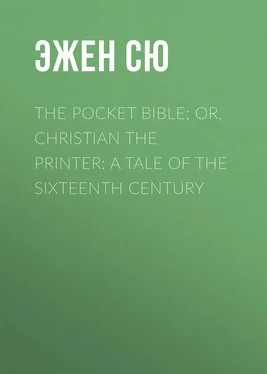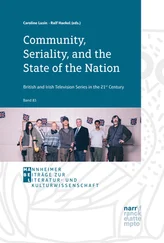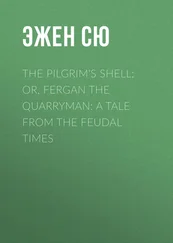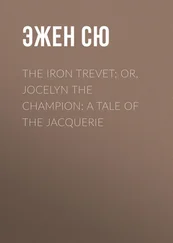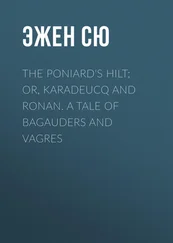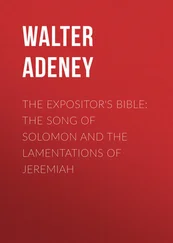Эжен Сю - The Pocket Bible; or, Christian the Printer - A Tale of the Sixteenth Century
Здесь есть возможность читать онлайн «Эжен Сю - The Pocket Bible; or, Christian the Printer - A Tale of the Sixteenth Century» — ознакомительный отрывок электронной книги совершенно бесплатно, а после прочтения отрывка купить полную версию. В некоторых случаях можно слушать аудио, скачать через торрент в формате fb2 и присутствует краткое содержание. Жанр: literature_19, foreign_antique, foreign_prose, на английском языке. Описание произведения, (предисловие) а так же отзывы посетителей доступны на портале библиотеки ЛибКат.
- Название:The Pocket Bible; or, Christian the Printer: A Tale of the Sixteenth Century
- Автор:
- Жанр:
- Год:неизвестен
- ISBN:нет данных
- Рейтинг книги:3 / 5. Голосов: 1
-
Избранное:Добавить в избранное
- Отзывы:
-
Ваша оценка:
- 60
- 1
- 2
- 3
- 4
- 5
The Pocket Bible; or, Christian the Printer: A Tale of the Sixteenth Century: краткое содержание, описание и аннотация
Предлагаем к чтению аннотацию, описание, краткое содержание или предисловие (зависит от того, что написал сам автор книги «The Pocket Bible; or, Christian the Printer: A Tale of the Sixteenth Century»). Если вы не нашли необходимую информацию о книге — напишите в комментариях, мы постараемся отыскать её.
The Pocket Bible; or, Christian the Printer: A Tale of the Sixteenth Century — читать онлайн ознакомительный отрывок
Ниже представлен текст книги, разбитый по страницам. Система сохранения места последней прочитанной страницы, позволяет с удобством читать онлайн бесплатно книгу «The Pocket Bible; or, Christian the Printer: A Tale of the Sixteenth Century», без необходимости каждый раз заново искать на чём Вы остановились. Поставьте закладку, и сможете в любой момент перейти на страницу, на которой закончили чтение.
Интервал:
Закладка:
Eugène Sue
The Pocket Bible; or, Christian the Printer: A Tale of the Sixteenth Century
TRANSLATOR'S PREFACE
The epoch covered by this, the 16th story of Eugene Sue's dramatic historic series, entitled The Mysteries of the People; or, History of a Proletarian Family Across the Ages , extends over the turbulent yet formative era known in history as the Religious Reformation.
The social system that had been developing since the epoch initiated by the 8th story of the series, The Abbatial Crosier; or, Bonaik and Septimine , that is, the feudal system, and which is depicted in full bloom in the 14th story of the series, The Iron Trevet; or, Jocelyn the Champion , had been since suffering general collapse with the approach of the bourgeois, or capitalist system, which found its first open, or political, expression in the Reformation, and which was urged into life by Luther, Calvin and other leading adversaries of the Roman Catholic regime.
The history of the Reformation, or rather, of the conflict between the clerical polity which symbolized the old and the clerical polity which symbolized the new social order, is compressed within the covers of this one story with the skill at once of the historian, the scientist, the philosopher and the novelist. The various springs from which human action flows, the various types which human crises produce, the virtues and the vices which great historic conflicts heat into activity – all these features of social motion, never jointly reproduced in works of history, are here drawn in vivid colors and present a historic canvas that is prime in the domain of literature.
In view of the exceptional importance of some of the footnotes in which Sue refers the reader to the pages of original authorities in French cited by him, the pages of an accessible American edition are in those cases either substituted or added in this translation.
DANIEL DE LEON.New York, February, 1910.
PART I
THE SOCIETY OF JESUS
INTRODUCTION
What great changes, sons of Joel, have taken place in Paris since the time when our ancestor Eidiol the Parisian skipper lived in this city, in the Ninth Century, at the time of the Northman invasion! How many changes even since 1350, when our ancestor Jocelyn the Champion fell wounded beside Etienne Marcel, who was assassinated by John Maillart and the royalists!
The population of this great city now, in the year 1534, runs up to about four hundred thousand souls; daily new houses rise in the suburbs and outside the city walls, whose boundaries have become too narrow, although they enclose from twelve to thirteen thousand houses. But now, the same as in the past, Paris remains divided into four towns, so to speak, by two thoroughfares that cross each other at right angles. St. Martin, prolonged by St. James Street, traverses the city from east to west; St. Honoré, prolonged by St. Antoine Street, traverses it from north to south. The Louvre is the quarter of the people of the court; the quarter of the Bastille, of the Arsenal, filled with arms, and of the Temple is that of the people whose profession is war; the quarter of the University is that of the men of letters; finally the quarter of Notre Dame and St. Germain, where lie the convents of the Cordeliers, of the Chartreux, of the Jacobins, of the Augustinians, of the Dominicans and of many other hives of monks and nuns besides the monasteries that are scattered throughout the city, is that of the men of the Church. The merchants, as a general thing, occupy the center of Paris towards St. Denis Street; the manufacturers are found in the eastern, the shabbiest of all the quarters, where, for one liard, workingmen can find lodging for the night. The larger number of the bourgeois houses as well as all the convents are now built of stone, and are no longer frame structures as they formerly were. These modern buildings, topped with slate or lead roofs and ornamented with sculptured facades, become every day more numerous.
Likewise with crimes of all natures; their increase is beyond measure. With nightfall, murderers and bandits take possession of the streets. Their numbers rise to twenty-five or thirty thousand, all organized into bands – the Guilleris , the Plumets , the Rougets , the Tire-Laines , 1 1 Tire-Laines means literally Wool-Pluckers.
the latter of whom rob bourgeois, who are inhibited from carrying arms. The Tire-Soies , 2 2 Tire-Soies: literally Silk-Pluckers.
a more daring band, fall upon the noblemen, who are always armed. The Barbets disguise themselves as artisans of several trades, or as monks of several Orders and introduce themselves into the houses for the purpose of stealing. Besides these there are the bands of Mattes or Fins-Mattois , skilled cut-purses and pick-pockets; and finally the Mauvais-Garçons , 3 3 Mauvais-Garçons; literally Bad Boys.
the most redoubtable of all, who publicly, for a price chaffered over and finally agreed upon, offer their daggers to whomsoever wishes to rid himself of an enemy.
Nor is this the worst aspect presented by the crowded city. Paris runs over with lost women and courtesans of all degrees. Never yet did immorality, to which the royal court, the Church and the seigniory set so shocking a pace, cause such widespread ravages. A repulsive disease imported from America by the Spaniards since the conquests of Christopher Columbus poisons life at its very source.
Finally, Paris presents a nameless mixture of fanaticism, debauchery and ferocity. Above the doors of houses of ill fame, images of male and female saints are seen in their niches, before which thieves, murderers and courtesans uncover and bend the knee as they hurry by, bent on their respective pursuits. The Tire-Laines, the Guilleris and other brigands burn candles at the altars of the Virgin or pay for masses for the success of their crimes in contemplation. Superstition spreads in even step with criminality. Pious physicians are cited who regularly take the weekly communion, and who, bought by impatient heirs, poison with their pharmaceutical concoctions the rich patients, whose decease is too slow in arriving. The most horrid felonies have lost their dreadfulness, especially since the papal indulgences, sold for cash, insure absolution and impunity to the criminals. The virtues of the hearth and all good morals seem to have fled to the bosom of those families only who have discarded the paganism of Rome and, although styled heretics, practice the simplicity of evangelical morality. One of these families is that of Christian the Printer, the great-grandchild of Jocelyn the Champion's son, who, due to the rapid progress made by the printing press, which rendered manuscript books useless and unnecessarily expensive, found it ever more difficult to earn his living at his trade of copyist and illuminator of manuscripts.
Accordingly, after the death of his father, who was the son of Jocelyn the Champion and continued to live at Vaucouleurs after witnessing the martyrdom of Joan of Arc, Allan Lebrenn moved to Paris, induced thereto by John Saurin, a master-printer of this city who, having during a short sojourn at Vaucouleurs been struck by the young man's intelligence at his trade, promised to aid him in finding work in the large city. He accepted the offer and speedily succeeded in his new field. He married in 1465, died in 1474, and left a son, Melar Lebrenn, who was born in 1466 and was the father of Christian the Printer.
Melar Lebrenn followed his father's occupation, and worked long after his father's death in John Saurin's establishment, where his services were highly appreciated. But after John Saurin's death, Melar Lebrenn, who had in the meantime married and had three children, Christian and two daughters, was dismissed by Saurin's successor, a man named Noel Compaign. Compaign was a religious bigot. He was incensed at what he termed Melar Lebrenn's unbelief, hounded him with odious calumnies, and spoke of him to the other members of the guild as dishonest and otherwise unfit. Melar Lebrenn soon felt the effect of these calumnies; his trade went down; his savings were consumed; his family was breadless; he had nothing left to him but the legends and relics of his family, that were handed down from generation to generation.
Читать дальшеИнтервал:
Закладка:
Похожие книги на «The Pocket Bible; or, Christian the Printer: A Tale of the Sixteenth Century»
Представляем Вашему вниманию похожие книги на «The Pocket Bible; or, Christian the Printer: A Tale of the Sixteenth Century» списком для выбора. Мы отобрали схожую по названию и смыслу литературу в надежде предоставить читателям больше вариантов отыскать новые, интересные, ещё непрочитанные произведения.
Обсуждение, отзывы о книге «The Pocket Bible; or, Christian the Printer: A Tale of the Sixteenth Century» и просто собственные мнения читателей. Оставьте ваши комментарии, напишите, что Вы думаете о произведении, его смысле или главных героях. Укажите что конкретно понравилось, а что нет, и почему Вы так считаете.
